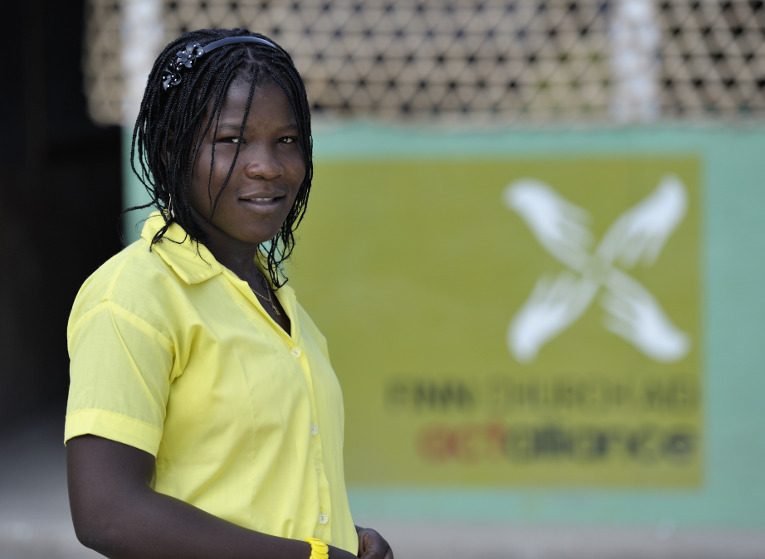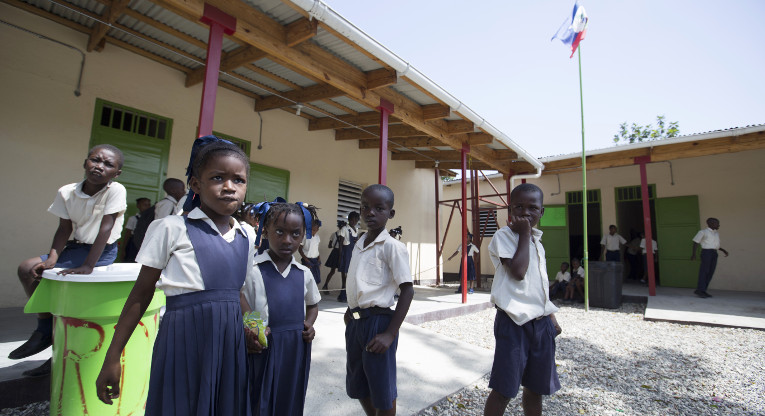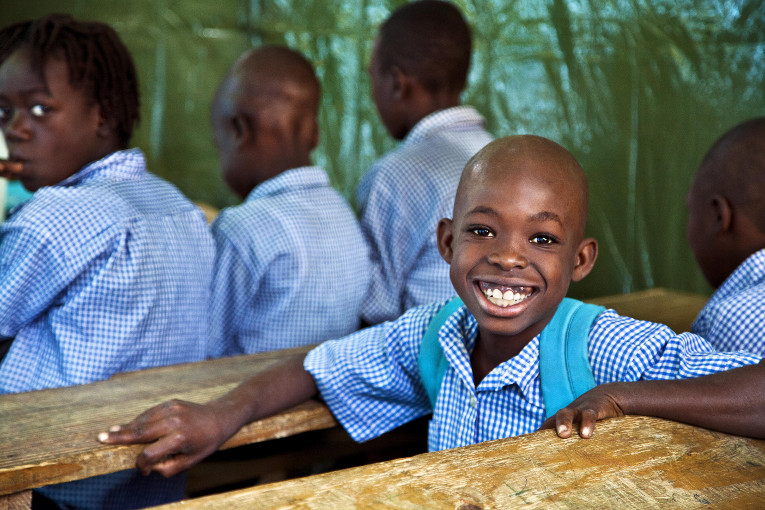Seven years in Haiti – 22 000 children got earthquake-resistant safe learning spaces
Seven years ago an earthquake destroyed homes and schools in Haiti. It was the starting point of Finn Church Aid’s largest humanitarian operation up to then; an operation that allowed thousands of children to return to school and continue their education. What will be the legacy of that work?
A devastating earthquake hit Haiti in January 2010. In the blink of an eye, 220,000 lives were lost and 1.3 million people were left homeless. Haiti, one of the poorest nations in the world, was utterly crushed by this enormous disaster. Immediately after the earthquake, Finn Church Aid sent emergency assistance to the country, soon followed by humanitarian workers.
As the extend of the devastation became clear, proceedings from the Common Responsibility Campaign, Finland’s largest national fundraising campaign, were allocated not only for development cooperation, but also for emergency aid to the victims of the earthquake. Countless Finnish donors have supported FCA’s operations in Haiti, many of them for years.
After responding to the acute emergency needs, FCA set up a Country Office in Haiti. First, school tents were delivered so schools could resume activities. Then, temporary school structures were built to regions most severely affected by the disaster. Parents of local school children often helped with construction.

Kathia Amy, a 17-year old in Grand-Goave, Haiti, one year after the January 2010 earthquake. She is pictured here in front of her school, the College Les Freres Milord, which was rebuilt after the quake by Finn Church Aid. Photo: Paul Jeffrey.
Although the temporary school structures were rudimentary, with walls made of tarpaulin or plywood, reopening schools gave people a chance to resume, at least to certain extent, their normal, everyday lives. As children in school uniforms reappeared on the streets, Haitians got a sense that life was returning to normal.
Early on, the light structure of the schools was a positive thing, since people who had experienced the earthquake would not have felt comfortable surrounded by heavy roofs and thick walls.
Thousands returned to school
Within the first two years, more than 340 temporary classrooms were built. Construction on permanent school buildings also began soon after the earthquake.
“The 17 schools Finn Church Aid constructed, as well as the remaining six schools and one vocational school still under construction, are sustainable and modern buildings, highly appreciated by local communities”, says Uluç Baslanti, FCA Country Manager for Haiti.
All schools are earthquake-resistant and provide a safe environment for children to learn in. FCA has provided all schools with school equipment, kitchens, and water and sanitation facilities. The schools will be in use for decades.

All schools are earthquake-resistant and provide a safe learning environment for children. Students at Myrdud school, Léogâne, in 2014. Photo: Minna Elo.
The temporary or permanent schools built by FCA have given 22,000 children a chance to study.
Major supporters of the school construction effort were The Inter-American Development Bank (IDB), UN Development Programme UNDP and The Primate’s World Relief and Development Fund (PWRDF).
School construction was the biggest and most visible part of FCA’s work in Haiti, but by far not the only one. One major result of FCA’s work has been encouraging communities to participate in the development of education and to weigh influence on their own situation.
Haiti
- Haiti is the poorest and least developed country on the western hemisphere. Literacy rate is at 60 percent and 12 percent of the population have access to the Internet. The need for education is extremely dire.
- Finn Church Aid is forced to end its work in Haiti this year as a result of funding cuts made to development cooperation.
- The work was extended for early 2017 to give FCA time to repair schools damaged in the hurricane and continue distributing psychosocial support and school lunch programmes in hurricane affected areas. Training was given to teachers to improve their disaster preparedness. FCA also distributed school supplies to students and teachers.
Additional training on student-centred teaching methods, and education of teacher trainers through volunteers of the Teachers without Borders network have improved the quality of teaching and the wellbeing of students.
Through its local partners, FCA has also supported literacy training for around one thousand illiterate adults. Women’s savings groups and livelihoods have been supported through Women’s Bank. Since Haiti is a country vulnerable to natural disasters, FCA and its local partners have strengthened the disaster preparedness of local communities. This preparedness was put to the test when a strong hurricane passed through Haiti in October 2016.
Even though hurricane Matthew resulted in property loss, people involved in FCA programmes have said they are proud of what they know they have achieved. Not even a hurricane can take away the new information and new skills that make a community stronger and better prepared.
“Haiti changed everything”
The humanitarian operation following the 2010 Haiti earthquake permanently changed the direction of Finn Church Aid.

Dorrel Kensy went to first grade in St. Pierre’s tarpaulin school in 2012. He favorite subject were mathematics and science. Now there iare permenent, safe school buildings at the site. Photo: Zara Järvinen.
“FCA isn’t the same organisation it was prior to the Haiti earthquake. That event marks one of the major milestones in FCA’s history”, says Eija Alajarva, Head of Humanitarian Assistance.
In earlier natural disasters, FCA had mainly assisted emergency efforts by funding local NGOs, like other members of the ACT Alliance, a coalition of church-affiliated humanitarian organisations. In Haiti, the magnitude of devastation meant that education specialists like FCA were gravely needed.
“Haiti has been a successful operation for FCA, but we learned many things the hard way, since there was no time to develop and test things in practice before implementing them on the field.”
Since Haiti, FCA has purposefully developed its readiness to assist in major natural disasters. The lessons learned were put to use in 2013 when typhoon Haiyan bruised the Philippines, and in 2015 when Nepal was struck by an earthquake.
“We are continuously developing our operation in order to offer the best possible response when a disaster strikes. Without Haiti we would be a very different organisation.”
Text: Ulla Kärki and Noora Jussila